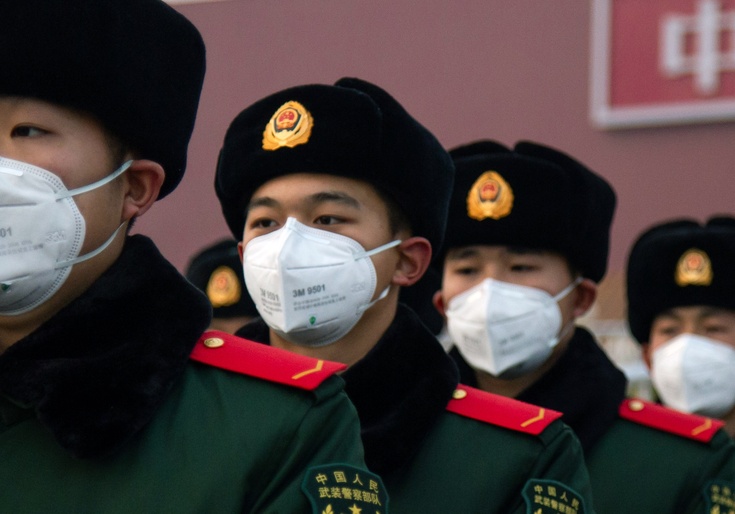The Trump administration is aggressively working to counter China's claims that it has overtaken the United States as a global health aid leader, with a senior administration official telling the Washington Free Beacon that Beijing's newfound generosity is part of an effort to distract the world from its early cover-up of the coronavirus.
Western media outlets have praised China in recent weeks for pledging some $2 billion over the next two years in global health aid, fueling claims that the Communist regime is poised to overtake America as the world's leading aid provider.
The White House is aggressively denying the claim, pointing to the fact that China still borrows more money from the United States and international donors than it has pledged to combat the coronavirus pandemic.
"China is trying to claim the mantle of leadership for the world while it's also coming hat in hand to the U.S. taxpayer and other industrialized nations' taxpayers," a senior administration official told the Free Beacon, speaking only on background about the administration's efforts to challenge China's narrative.
The Communist Party has received an average of more than $2 billion each year from the World Bank, which is subsidized in part by the U.S. taxpayer. Additionally, officials say China's $2 billion aid guarantee is just a small fraction of what the United States spends each year to combat health crises abroad.
China's claims about the dramatic aid efforts it is undertaking to stop the spread of the coronavirus have won it plaudits from Western analysts and some in the media who have amplified Beijing's rhetoric in a bid to portray the Trump administration as pulling back from the international stage.
As China puts on a global show of goodwill—which includes sending doctors and medical supplies to a host of countries—those analysts say the Trump administration risks allowing China to assume a role historically played by the United States.
But administration officials say the United States has dwarfed China’s efforts, giving more than $9.9 billion to world health causes each year, totaling nearly 40 percent of the entire world's allocation to those issues. The rest of the world combined contributes $16 billion.
The White House further maintains that its recent decision to cut funding to the World Health Organization has not diminished America's leading role in providing health care services around the world.
Before President Trump cut U.S. funding to the WHO over its response to the coronavirus, the United States contributed one quarter of the WHO's annual dues for member nations, and private U.S. charities remain the WHO's second-largest contributor.
The millions of dollars the United States allocated to the WHO each year is just a fraction of the total money spent for global health issues, such as AIDS, the flu, and a range of other deadly viruses that largely impact developing nations.
China, by comparison, gives less than 1 percent of the WHO's annual allocation, according to the administration official. This amounts to around $400 million.
The vast majority of U.S. aid is allocated directly to nations in need, meaning that, unlike with money given to the WHO, the U.S. government has oversight over how the money is spent.
"More than 20 times what we put into the WHO we are putting towards global health funding outside the U.S," the administration official said. This money is delivered through an array of vehicles, including the United Nations and other localized health agencies.
The United States continues to move forward with its coronavirus response, which officials say has not been hindered by the administration's conflict with the WHO. This includes working with other countries to ensure they get much-needed supplies and medical devices.
The United States is on pace to produce more than 100,000 ventilators by the end of July, according to the White House, which maintains that not a single American patient who needed a ventilator has failed to get one.
The United States has committed more than 16,000 ventilators to a host of nations. Around 1,200 have already been shipped to Austria, Canada, Mexico, Russia, South Africa, Switzerland, and several other countries.
